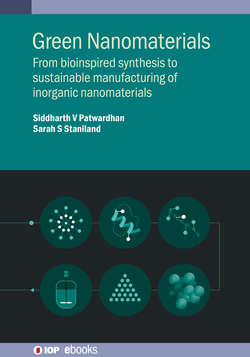Читать книгу Green Nanomaterials - Siddharth Patwardhan - Страница 13
На сайте Литреса книга снята с продажи.
1.3 Green chemistry and nanomaterials
ОглавлениеWhen compared to the sectors listed in table 1.1, nanomaterials manufacturing is relatively young. Most attention has been focussed on the discovery and design of nanomaterials. Although the use of nanomaterials can be back-dated to the 9th century (see chapter 2, section 2.2), the large-scale commercial production of engineered nanomaterial developed and accelerated around the late 1990s and early 2000s [9]. This means that the manufacturing-related developments for nanomaterials are in their infancy, and for a vast majority of newly discovered nanomaterials, large-scale manufacturing does not exist. In other words, we are happy to have some process for the large-scale manufacturing of desired nanomaterials, while little or no attention is given to the sustainability of the process. However, this needs to change and the time is ripe to focus on the environmental impact of nanomaterials production, in order to apply the developments enjoyed by other sectors, listed in table 1.1, to nanomaterials production. These factors clearly stress the urgent need for developing fundamentally new production methods for nanomaterials that are green and sustainable. This change in thinking is very important, and previous experience suggests that when sustainability/green principles are included at the discovery stage, this provides the most benefits.
This book focuses on stimulating a shift towards a sustainable approach for nanomaterials—from discovery to production. Chapter 2 will serve as an introduction to nanomaterials. Their properties will be discussed and benefits offered from their use in selected applications will be presented. In chapter 3, we will provide an overview of the analytical techniques used to probe various properties of nanomaterials. Chapter 4 will present, with examples, a range of current manufacturing processes used to produce nanomaterials at large scales. We will discuss these processes for sustainability by using the theory and concept of green chemistry covered in chapter 1. Chapter 5 will summarise the benefits of using nanomaterials, while highlighting the need for greener alternatives. In chapter 6, we will detail how biology produces a range of inorganic materials from macro to nanomaterials and point out the potential for learning from biology. This learning will be consolidated in chapter 7 where strategies for developing biologically inspired green routes to produce nanomaterials will be presented. The key advantages and opportunities from these alternative routes will be identified, and further explained in chapters 8 and 9 with two case studies.
